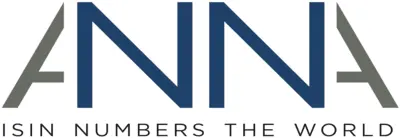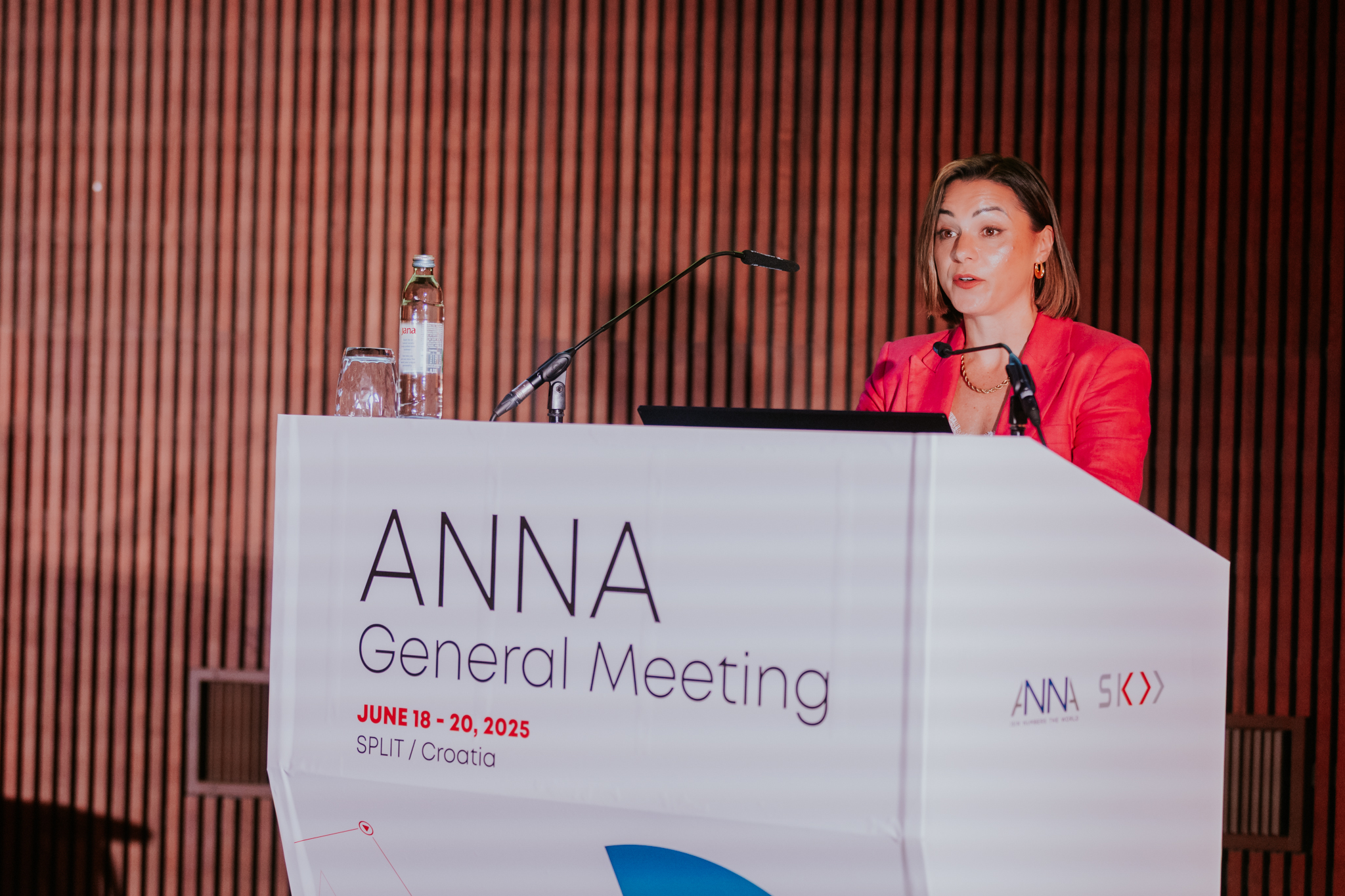First published on TabbFORUM, 25 June 2025. A universal language Consensus-based financial standards developed by…
The Association of National Numbering Agencies: 40 Years of ISIN (blog)
The Association of National Numbering Agencies: 40 Years of ISIN
by Emma Kalliomaki MD of ANNA, and Executive Director and ANNA Secretariat Uwe Meyer
This week sees the 40th anniversary of the ISIN, the International Securities Identification Number. The ISIN is an International Organization for Standardization (ISO) standard, ISO 6166, uniquely identifying financial and referential instruments. It has been developed by industry under rigorous processes to become the globally adopted, common language of financial instruments processing. The ISIN is used around the world, and there are now more than 79 million ISINs and related information available, helping to harmonise financial and referential instrument information.
Early Evolution of the Standard
Up to the late 1970s, the ISIN was still in preparation, and countries were predominantly using their own local codes. But it was around this time that stakeholders within the financial markets realised they needed something to identify securities worldwide in a consistent and harmonised manner. The first version of the ISO 6166 (ISIN) standard was published on the 1st of November, 1981.
Those involved in the development of the ISIN believed it was essential to facilitate cross border trading and the need for structured collaboration and global interoperability. ISINs became the bridge for local investors to gain access to global markets. From the late 70s, countries started coming together to develop a common identifier and the associated framework. Within each jurisdiction, a central market organisation took on the function of National Numbering Agency (NNA) to facilitate the role of ISIN assignment and maintenance.
ISIN and the Association of National Numbering Agencies (ANNA)
Following the publication of the ISIN standard, the NNAs established the Association of National Numbering Agencies, ANNA, which was founded by 22 members on January 29th, 1992. ANNA is a global member association that fosters standardisation within the financial industry by upholding and promoting ISO’s principles for adoption, development and maintenance of ISIN to identify, FISN, to describe, and CFI to classify financial and referential instruments. (More on FISN and CFIs below). At the heart of ANNA are the member NNAs, responsible for ISIN assignment and maintenance. NNAs are the local market experts whose coordinated efforts bring consistent and harmonised assignment practices to global markets. ANNA has grown significantly since its formation and now has 118 members and partners globally, allocating ISINs for more than 200 jurisdictions.
ISIN and the Evolution of Standards
Over the following decades, the ISIN grew to cover more asset classes, starting with traditional instruments like equities and debt, then shortly afterwards, in the 1990s, including further asset classes such as exchange-traded derivatives. By the 2000s, ISINs were also being issued for structured products and referential instruments. The latest significant expansion of the ISIN has been the identification of OTC derivatives which commenced in 2017, with the establishment of the Derivatives Service Bureau (DSB). The DSB is an ANNA subsidiary, and has facilitated the expansion of the ISIN standard to identify and classify OTC derivatives, enabling market participants to fulfil regulatory reporting requirements. This highlights how the ISIN has assisted in bringing greater transparency and supervision capabilities to the financial markets across the full suite of asset classes.
Another key development over the years has been the take up of the Classification of Financial Instrument (CFI) codes, an ISO standard first published in 1997. In 2015, the first version of the Financial Short Instrument Name (FISN) was also established to play a complementary role in describing financial and referential instruments. ISIN itself is a code that identifies an instrument. The CFI is a code that classifies the instrument and the FISN is a human-readable abbreviated description providing further essential details about the instrument. Both the CFI and FISN are important complementary standards that work in unison with the ISIN.
ANNA remains flexible to an evolving market, monitoring closely how markets change including the emergence of new asset classes. In ANNA’s role as ISO Registration Authority, ANNA has established and maintains guidelines for the ISIN to ensure consistency in application and global harmonisation. As ISO standards have a review cycle of five years, guidelines cover the expected approach to new instrument and asset classes between review cycles. With digital assets emerging as a new investment class, the availability of quality, standardised reference data will serve as the foundation for a trusted token market. As the Registration Authority for the ISIN, ANNA is currently working on developing guidelines for digital assets to ensure the ISIN standard will evolve to benefit the industry at large.
ISIN and the ANNA Service Bureau
A significant milestone for the ISIN came in 1993 when the first centralised ISIN reference database was established. At that stage, it was called GIAM (Global ISIN Access Mechanism). It meant that for the first time, ISINs across all jurisdictions could be consolidated in a single database, and a new central repository was created. ANNA could then provide ISIN data to NNAs and interested market participants. This database has developed into the ANNA Service Bureau, ASB, which was established in 2001. CUSIP Global Services and SIX Financial Information jointly operate and maintain the ASB providing daily support as well as evolving the service as needed, with the latest upgrade having gone live in September 2021. This upgrade included the migration of the platform to a cloud-based infrastructure allowing for reduced latency and increased cyber-security.
Once NNAs have assigned the identifiers and their associated data, the data is provided to the ASB, using a common data record to ensure quality and consistency. ASB data is made available online via a free ISIN lookup service as well as through subscription services. The ASB’s data and lookup service are available to all market stakeholders to use within their own reference data management processes. The ASB is now the largest database of ISINs and associated data globally with, as mentioned above, coverage across more than 200 jurisdictions worldwide and, +79 million ISINs and related information on file.
ISIN: Collaboration and Regulation
ISIN is now used alongside other standards to help improve the harmonisation and interoperability within the global markets. ANNA collaborates with other standards bodies on initiatives to service the industry. The GLEIF and ANNA open-source ISIN-to-LEI relationship files, linking ISINs to Legal Entity Identifiers, LEIs, is one such initiative created to help improve transparency of exposure by linking standards on the issuer and issuance of securities.
Regulators have become aware of how important it is to use standards, particularly post-financial crisis. Through ISIN use, organisations can leverage the efficiencies related to global interoperability and realise the benefits of harmonisation across capital markets. As a result, the ISIN has become the recognised global standard for unique identification for all types of financial instruments, helping to connect and protect global markets.
Those involved at ANNA, as well as the NNAs, with ongoing collaborative work with market participants, regulators and other standards bodies, will strive to ensure the ISIN remains the trusted identifier to deliver global interoperability, harmonisation and efficiency for the next forty years and beyond. ANNA will continue to strive to ensure best practice and sound governance principles are enshrined in the ISIN standard for years to come.



